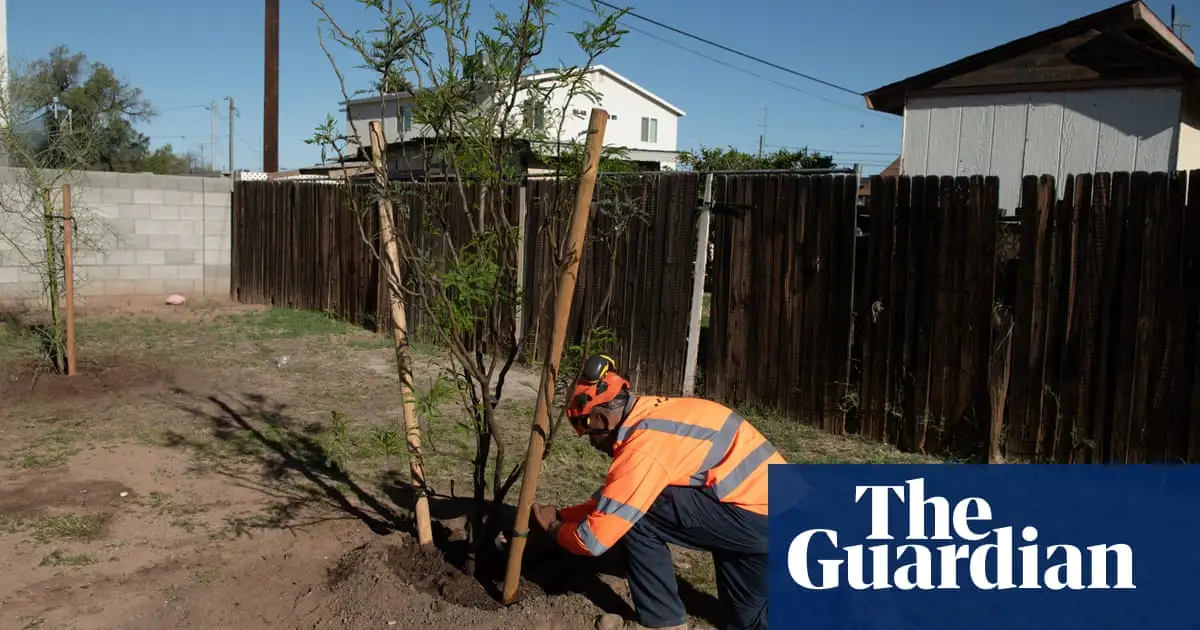deleted by creator
For sure, but I am interested to see how effective it is specifically in Phoenix which is probably one of the most hostile inhabited climates for trees. If they can make it work there, it can work anywhere. And it could provide information about which species can survive future climates in other areas as well, especially in the American southwest.
deleted by creator
This is the best summary I could come up with:
Still, it was sweaty backbreaking work as they carefully positioned, watered and staked a 10ft tall Blue palo verde and Chilean mesquite in opposite corners of resident Ana Cordoba’s dusty unshaded backyard.
Over the course of three days in early April, arborists planted 40 or so desert adapted trees in Grant Park, as part of the city’s equity-driven heat mitigation plan to create a shadier, more livable environment amid rising temperatures and hundreds of heat-related deaths.
“This is one of the city’s oldest neighborhoods – and one of the most neglected,” said Silverio Ontiveros, a retired police chief turned community organizer who drummed up interest for the tree planting by knocking on doors and putting flyers through every neighbor’s letterbox.
Grant Park is a majority Latino community in south Phoenix situated next to a sprawling electrical substation – a hot and dusty neighborhood with 200 or so homes, but no stores and plenty of empty lots and boarded-up houses.
Trees have multiple benefits in urban areas which include cleaner air, improved physical and mental health, water conservation, increasing wildlife habitat, CO2 storage and sequestration and lower temperatures through shade.
The slow progress in improving tree coverage has frustrated many Phoenix residents, and in May, the heat team will present a new master shade plan to the city council, setting out more nuanced data-driven goals for homes, sidewalks and parks to replace the 25% citywide one.
The original article contains 1,203 words, the summary contains 235 words. Saved 80%. I’m a bot and I’m open source!



